
How to Use Humidity and Temperature Sensor (DHT03): Examples, Pinouts, and Specs
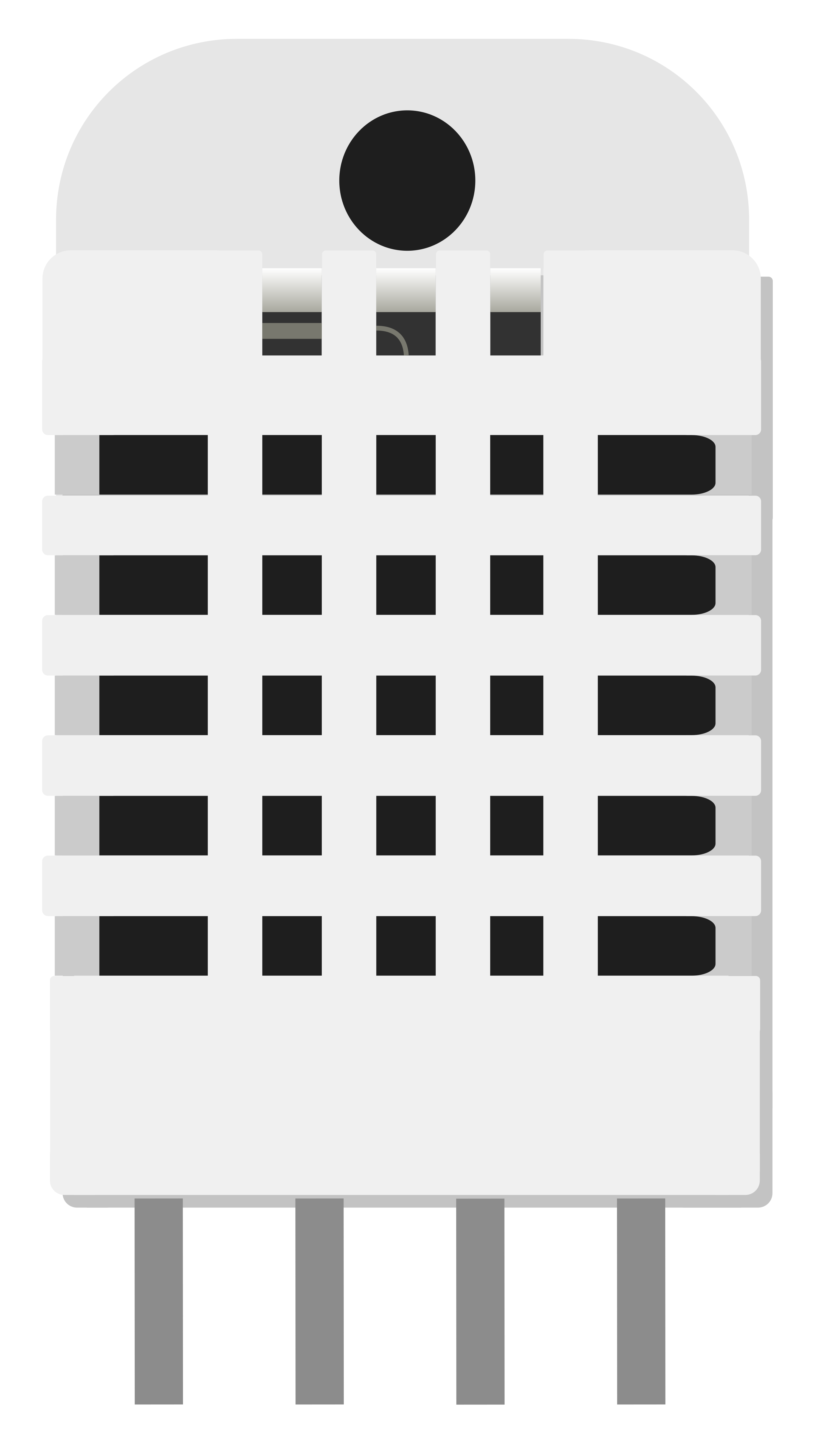
 Design with Humidity and Temperature Sensor (DHT03) in Cirkit Designer
Design with Humidity and Temperature Sensor (DHT03) in Cirkit DesignerIntroduction
The DHT03 is a reliable sensor that measures both humidity and temperature in the surrounding environment. It is designed to provide digital outputs, which makes it easy to interface with microcontrollers such as the Arduino UNO. The DHT03 is commonly used in applications such as weather stations, home automation systems, and HVAC (Heating, Ventilation, and Air Conditioning) for climate control.
Explore Projects Built with Humidity and Temperature Sensor (DHT03)
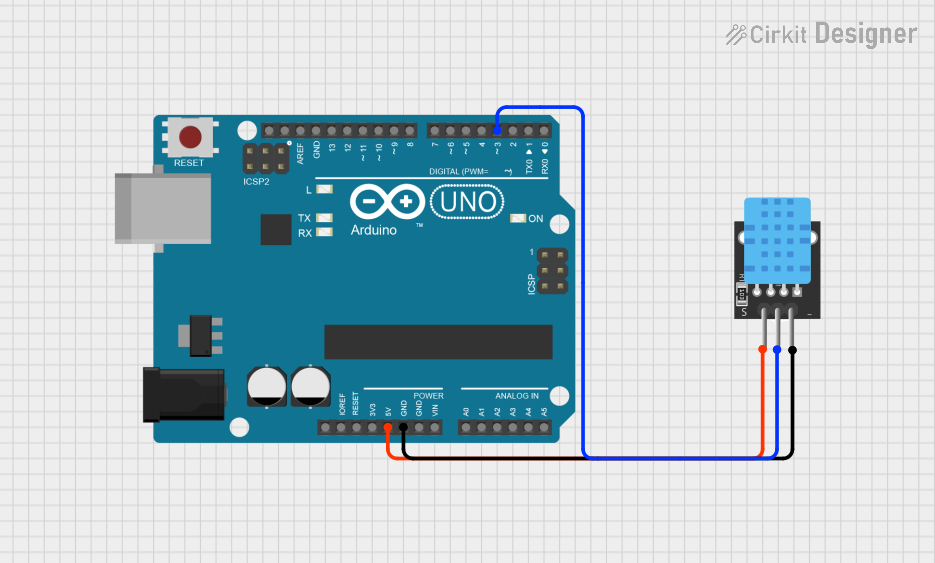
 Open Project in Cirkit Designer
Open Project in Cirkit Designer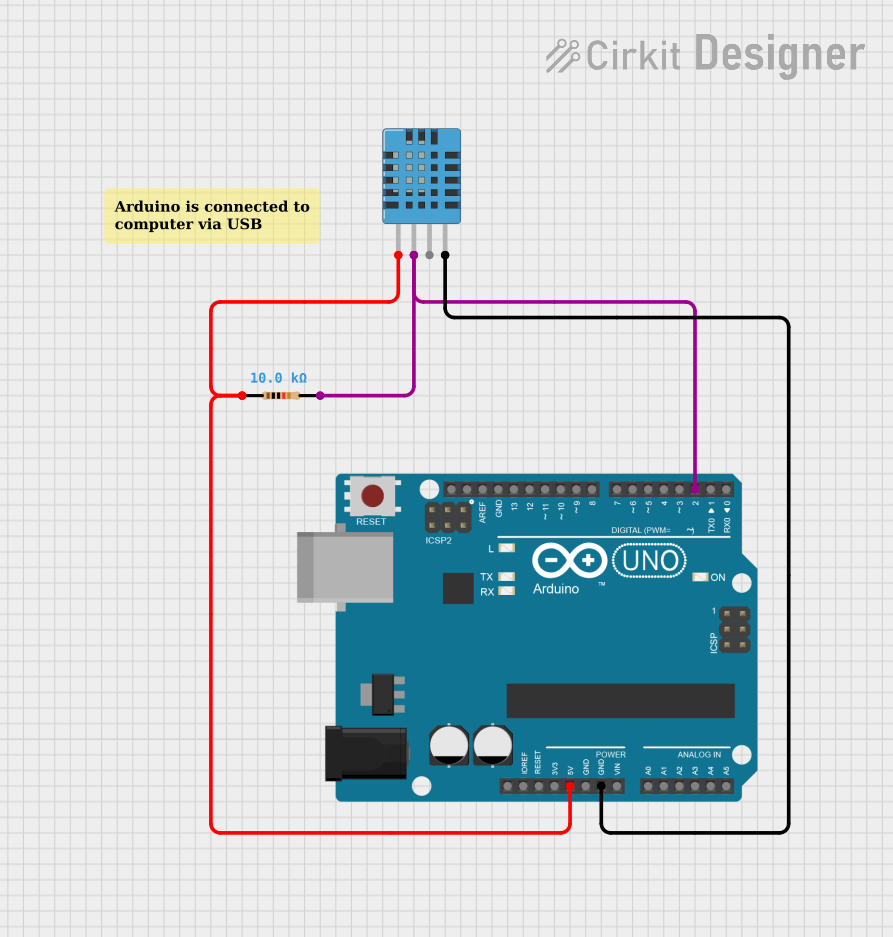
 Open Project in Cirkit Designer
Open Project in Cirkit Designer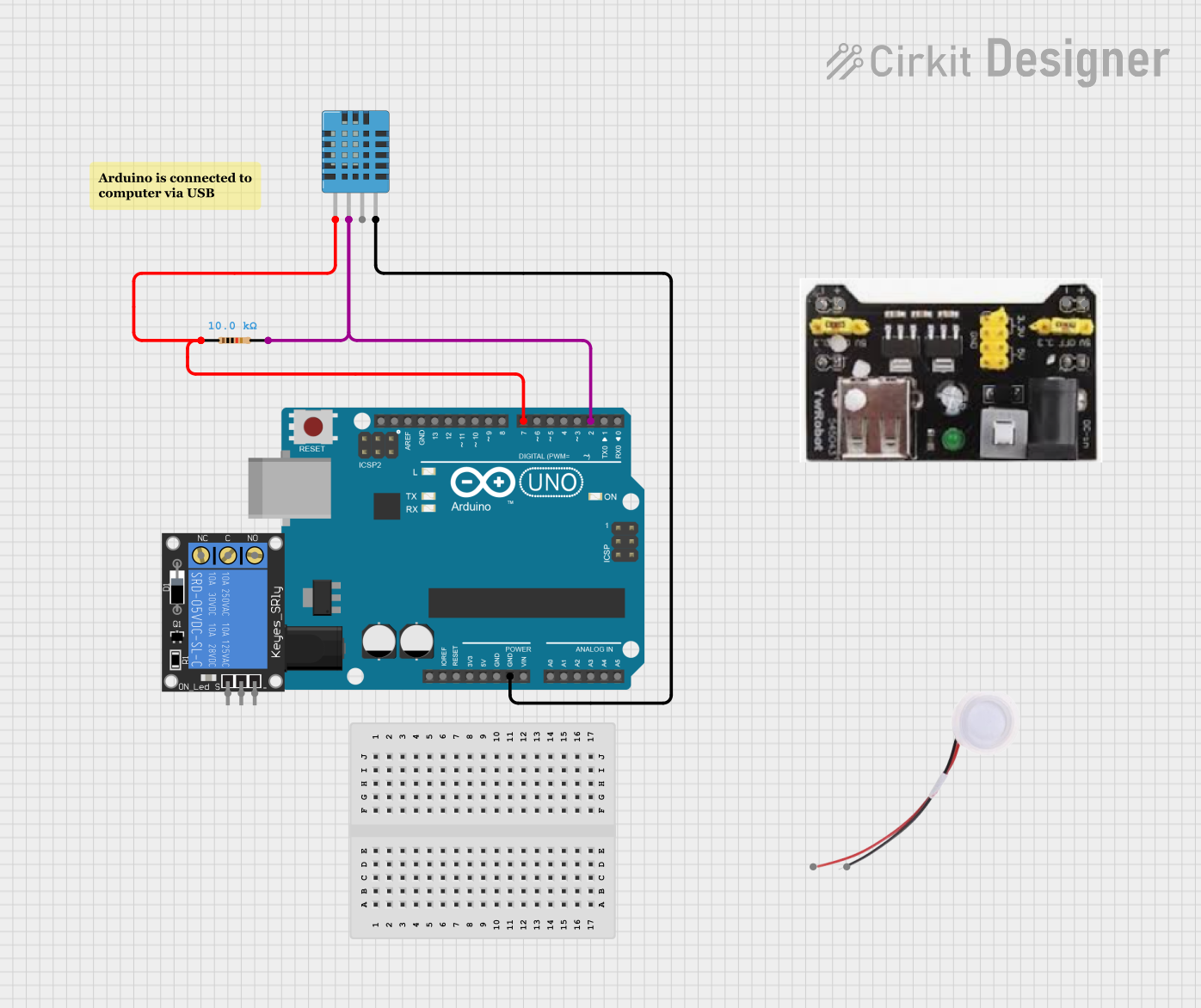
 Open Project in Cirkit Designer
Open Project in Cirkit Designer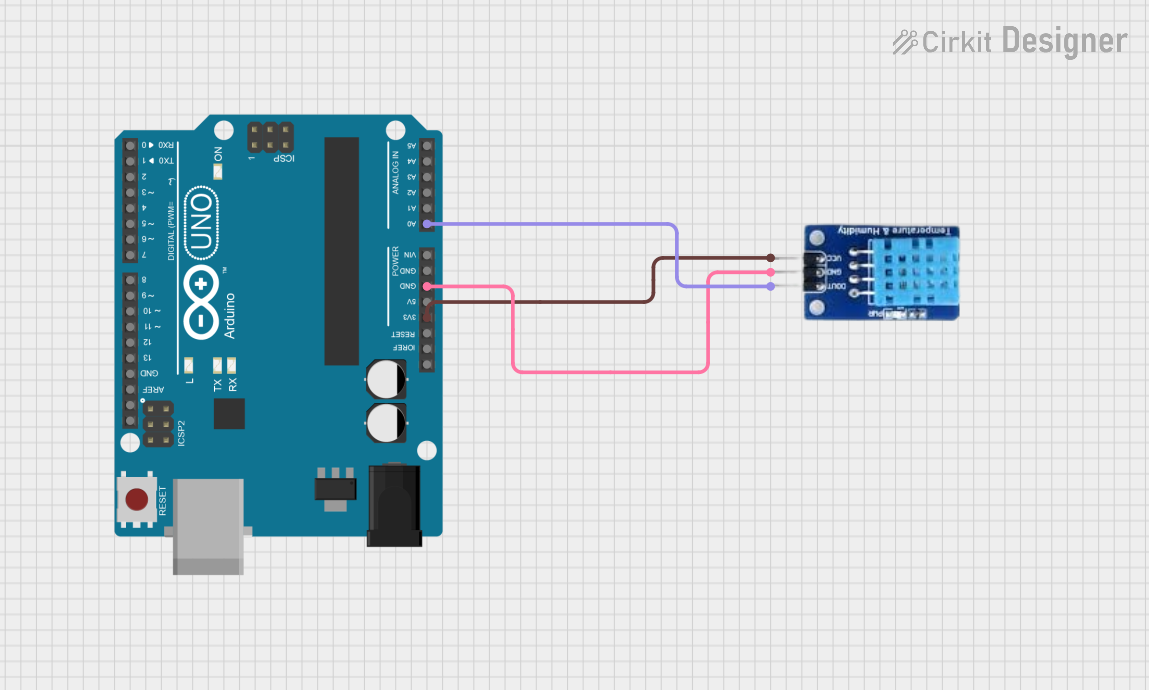
 Open Project in Cirkit Designer
Open Project in Cirkit DesignerExplore Projects Built with Humidity and Temperature Sensor (DHT03)

 Open Project in Cirkit Designer
Open Project in Cirkit Designer
 Open Project in Cirkit Designer
Open Project in Cirkit Designer
 Open Project in Cirkit Designer
Open Project in Cirkit Designer
 Open Project in Cirkit Designer
Open Project in Cirkit DesignerTechnical Specifications
Key Technical Details
- Humidity Measurement Range: 0-100% RH
- Humidity Measurement Accuracy: ±2% RH
- Temperature Measurement Range: -40°C to 80°C
- Temperature Measurement Accuracy: ±0.5°C
- Operating Voltage: 3.3V to 5V DC
- Output Signal: Digital signal via a single data pin
- Sampling Rate: ≤ 1 Hz (once every second)
Pin Configuration and Descriptions
| Pin Number | Name | Description |
|---|---|---|
| 1 | VCC | Power supply (3.3V to 5V DC) |
| 2 | DATA | Digital output that sends temperature and humidity data |
| 3 | NC | Not connected |
| 4 | GND | Ground |
Usage Instructions
Interfacing with Arduino
Connecting the Sensor:
- Connect the VCC pin to the 5V output on the Arduino.
- Connect the DATA pin to a digital I/O pin on the Arduino (e.g., pin 2).
- Connect the GND pin to the ground (GND) on the Arduino.
Programming the Arduino:
- Include the DHT sensor library in your Arduino IDE.
- Initialize the sensor by creating an instance of the DHT class.
- Read the humidity and temperature values using the appropriate functions.
Best Practices
- Place the sensor in a location with good air circulation to ensure accurate readings.
- Avoid exposing the sensor to condensation or water.
- Use a pull-up resistor (typically 10kΩ) between the VCC and DATA pins if necessary.
Example Arduino Code
#include "DHT.h"
#define DHTPIN 2 // Digital pin connected to the DHT sensor
#define DHTTYPE DHT03 // DHT03 to specify the sensor type
// Initialize the DHT sensor
DHT dht(DHTPIN, DHTTYPE);
void setup() {
Serial.begin(9600);
dht.begin();
}
void loop() {
// Wait a few seconds between measurements.
delay(2000);
// Reading temperature or humidity takes about 250 milliseconds!
float humidity = dht.readHumidity();
float temperature = dht.readTemperature();
// Check if any reads failed and exit early (to try again).
if (isnan(humidity) || isnan(temperature)) {
Serial.println("Failed to read from DHT sensor!");
return;
}
// Compute heat index in Celsius (isFahrenheit = false)
float heatIndex = dht.computeHeatIndex(temperature, humidity, false);
Serial.print("Humidity: ");
Serial.print(humidity);
Serial.print("% Temperature: ");
Serial.print(temperature);
Serial.print("°C Heat index: ");
Serial.print(heatIndex);
Serial.println("°C");
}
Troubleshooting and FAQs
Common Issues
- Inaccurate Readings: Ensure the sensor is not placed near heat sources or in direct sunlight.
- No Data: Check the wiring, ensure the correct pin is used, and that there is a stable power supply.
- Erratic Readings: Use a pull-up resistor on the data line and ensure there's no condensation on the sensor.
FAQs
Q: Can the DHT03 sensor be used outdoors? A: Yes, but it should be protected from direct sunlight and water.
Q: How long does the sensor need to acclimate to a new environment before providing accurate readings? A: It typically takes 1-2 minutes for the sensor to acclimate to the new conditions.
Q: Is it necessary to calibrate the DHT03 sensor? A: The DHT03 comes factory-calibrated, but for critical applications, additional calibration may be performed.
Q: What is the lifespan of the DHT03 sensor? A: With proper use, the DHT03 can last for several years, but its performance may degrade over time due to environmental factors.
For further assistance, consult the manufacturer's datasheet and technical support resources.